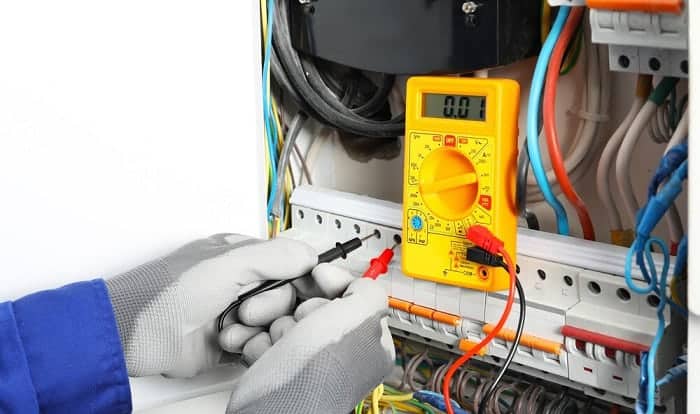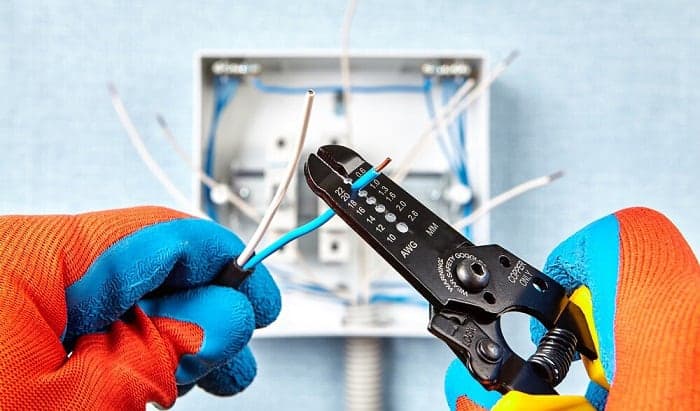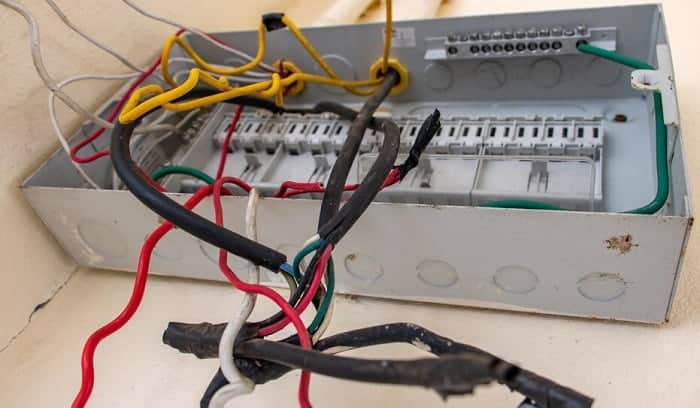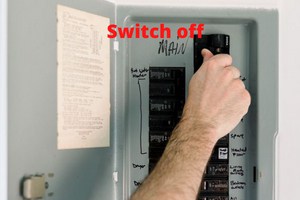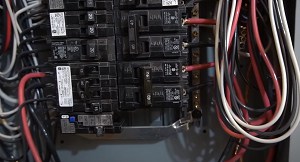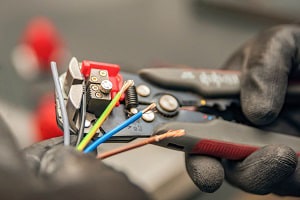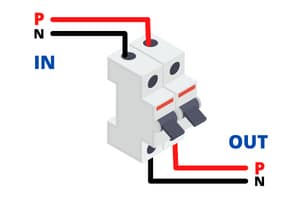Do you need a new circuit breaker replacement or are you adding an extension? Either way, if you’re bound to the task of installing one, it is best to learn how to wire a double pole circuit breaker.
You can do this by simply turning off the power, removing the panel cover, stripping the circuit wires, connecting the hot wires to your new breaker, and finally inserting your breaker into the panel.
Although this process sounds a little bit complicated, you’ll find the opposite once you finish this lesson. Before you work on your electrical service panel, make sure to have a professional contractor present, or let them do it to ensure safety.
What You Will Need
A double pole breaker installation doesn’t need the priciest tools in the market. You’ll only need to pay attention to the quality of your circuit breaker while you can find your tools in a typical toolbox at home. The essential items to have are listed below before you proceed to wire a double pole breaker.
1. 240-Volt Circuit Breaker
A double pole breaker has 240 volts because of the two hot wires supplying 120 volts each. 240V 30 amp double pole breaker wiring consists of two hot wire conductors (black or red) and a ground wire conductor (green). Also, check this post to know how to measure amps on a 240-volt circuit breaker if you needed.
When planning to have your circuit breaker replaced, you must learn the specifics that match the panel breaker’s requirements. For example, your breaker panel is from Siemens manufacturing company. By design, your double pole breaker should also be from Siemens.
Also, make sure your breaker suits your electrical system. Using a double pole breaker for 110 Volt circuits is not recommended, for example.
2. Personal Protective Equipment
Personal Protective Equipment will serve as your defense against electrical hazards since you’ll be working on a high-voltage area. When you install a breaker, you’ll need these PPEs:
- Protect your eyes with a safety goggle in case of an arc flash.
- Your hands should not touch the panel barehanded, so secure them with insulated gloves.
- Lastly, in the area where you stand, the floor must have insulated matting, or better, wear a pair of insulated boots. It’s a precautionary measure in case a ground fault occurs.PlusMinus Screwdriver
3. PlusMinus Screwdriver
This type of screwdriver is the best for electrical panels and terminals because of its hybridity. It is pretty handy for the screws in your panel, whether Philips type or slotted. It is highly resistant against slip-off, which is good for reaching tight spaces.
On the other hand, you can still use a regular screwdriver if that’s the only tool available. If you plan to use different screwdrivers, I recommend using a medium-length tool that won’t slip off easily and is adequately insulated.
4. Wire Stripper
A wire stripper, also known as a cable stripper, is used to remove the protective insulators from the wire. Its design is to remove the plastic insulation layer and avoid damage to the copper wiring inside.
Typically, there are wire strippers made for stripping 10-gauge wiring to 20-gauge wiring. In your case, you’ll be working on a 10-gauge wire, so buy the tool that will strip the circuit breaker’s wiring precisely. Uvital Wire stripper is an excellent example of this tool.
5. Voltage Tester
Lastly, for added safety, use a voltage tester to identify the live parts of your panel before putting your hands on it.
You can also use a multimeter (analog or digital). One advantage of a multimeter is that you can identify later on if your wiring is proper or reversed.
Steps to Wire a Double Pole Circuit Breaker
Now that you’ve gathered all the materials you need, proceed with your circuit breaker installment. Follow these elaborative procedures while keeping in mind your safety.
Step 1. Switch off the main breaker & test for current
Cut the primary power source by switching off the high amperage breaker found on the topmost part of your panel. Then, carefully remove the screws holding the panel door and the cover plate.
Once all the inside wirings of your breakers are revealed, test if there’s still a flow of current running inside your breakers using a voltage tester. Remember to avoid getting in contact with the service lugs because these have power at all times. After you make sure the main breaker has no electricity, proceed to the next step.
Step 2. Examine the panel’s wiring
Before you touch any wiring related to your breaker installation, find the free slot where you will put your double pole circuit breaker.
As I’ve mentioned earlier, we have two hot wires or conductors, making our double pole breaker for two circuits available.
With that fact, only two hot wires are involved here except if you have a Miniature Circuit Breaker (MCB) where there are four terminals: 2 for incoming supply and 2 for outgoing supply.
Step 3. Wire strip the circuit wires
From the tip of each hot wire, strip about half an inch of the protective insulation using a wire stripper. Perform this procedure until you thoroughly expose the copper wires. Repeat the process on the green ground wire and make sure all three wires are well-gauged to withstand the breaker’s amperage.
Step 4. Connect your double pole circuit breaker
Just like what you see in a typical double pole circuit breaker wiring diagram, connect the two hot wires to the circuit breaker’s terminal — one hot wire per terminal, respectively.
After securing the terminal screws tightly, put in place your breaker into the panel horizontally. Fit the tabbed end of the breaker into the slots, then put the other end into the blades of the hot bus bars until you hear the clicking sound, indicating it’s secure.
Do not forget to lodge your ground wire to the ground bar. Insert the stripped end into an open slot and secure the terminal screws. For safety purposes, do not put multiple ground wires into a single space.
Step 5. Reassemble the breaker panel
You can now put the dead front cover, along with the panel door, back into the panel’s body. Finally, restore power and carry out a test involving the circuit connected to your new double pole breaker.
Conclusion
Did you have fun in our lesson? This article on how to wire a double pole circuit breaker is essential for a DIY person like you with its easy-to-follow steps. Never forget to switch off the power first before you pry with the breaker lines, and in case you find any trouble, contact an electrician.
What are your thoughts and comments on this tutorial? Kindly participate with us in the comment section below, and please share if you find this helpful.

I am Edwin Jones, in charge of designing content for Galvinpower. I aspire to use my experiences in marketing to create reliable and necessary information to help our readers. It has been fun to work with Andrew and apply his incredible knowledge to our content.

